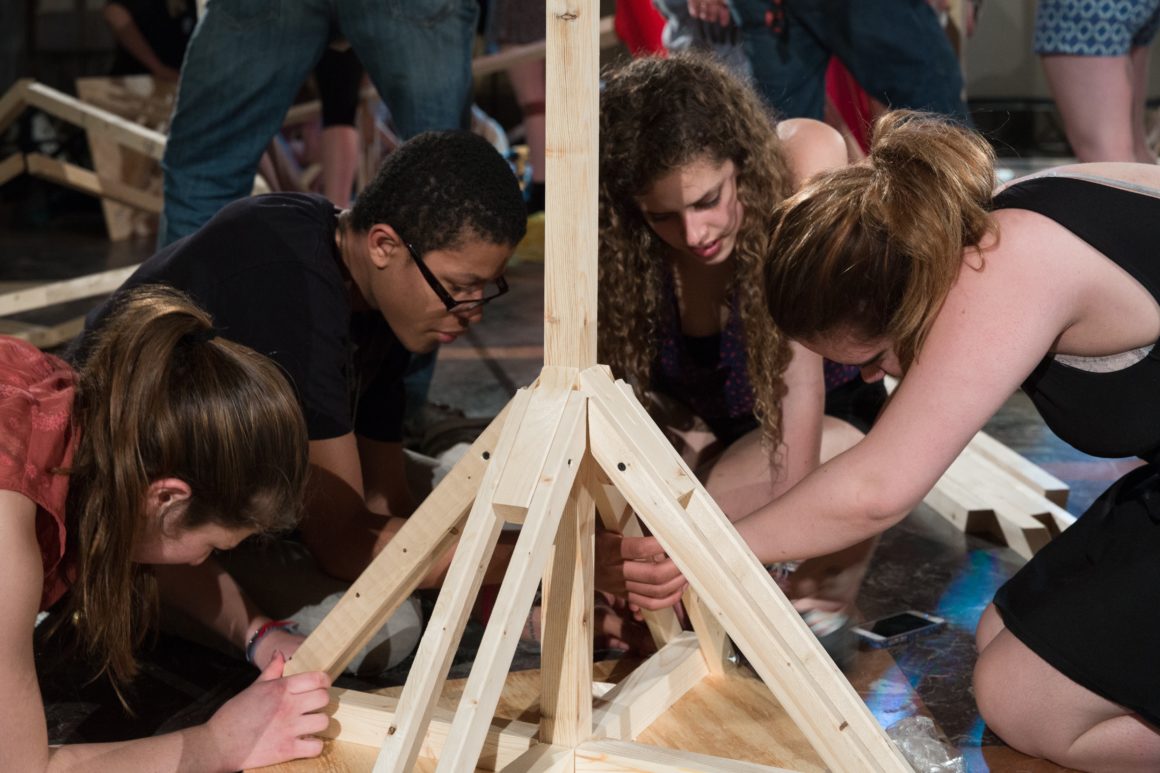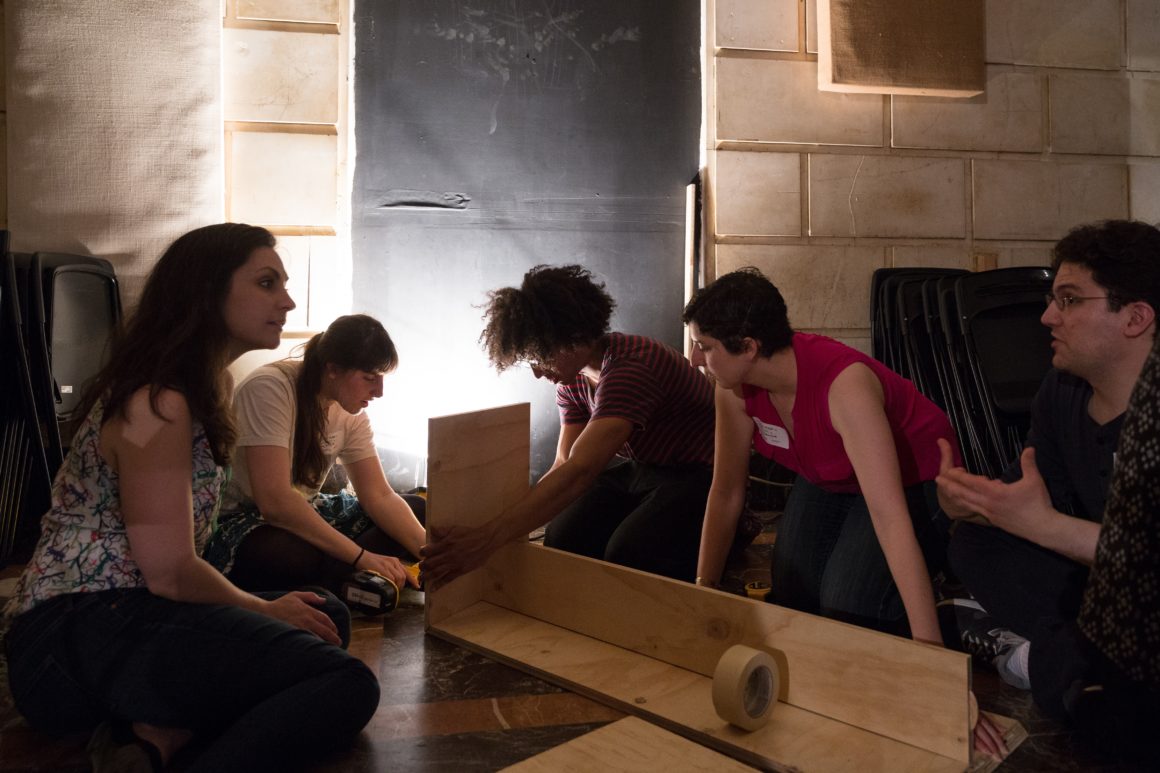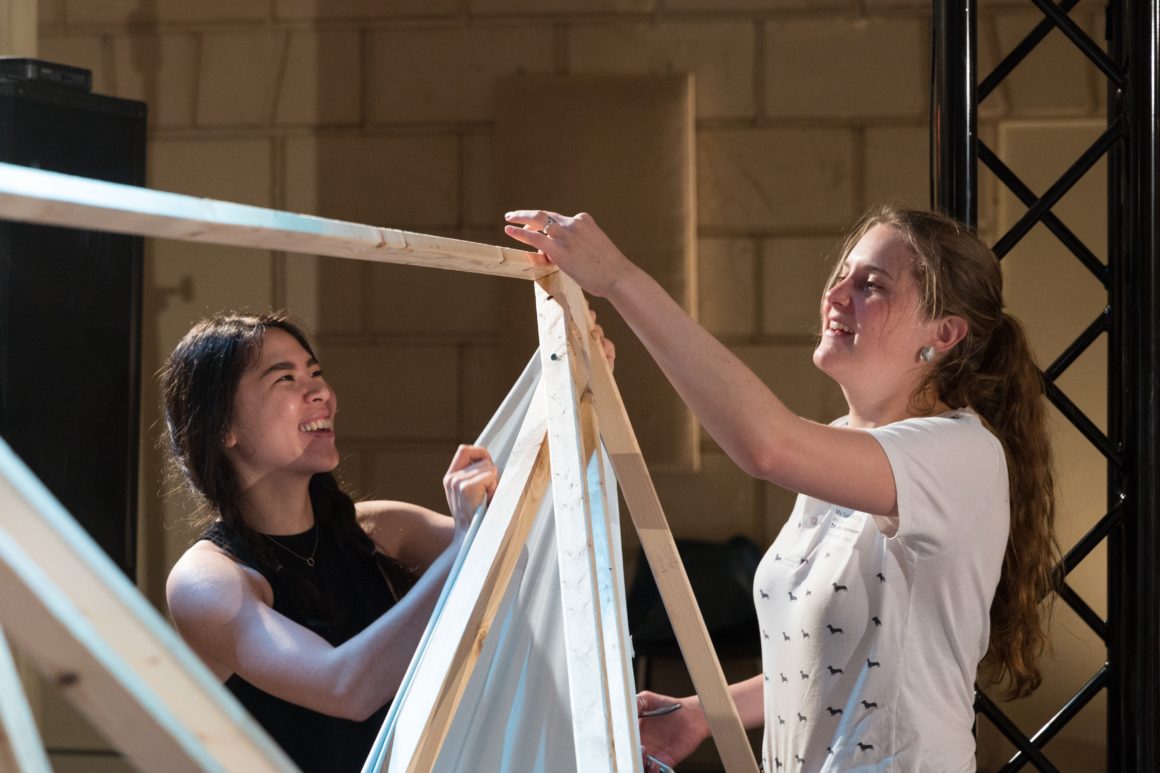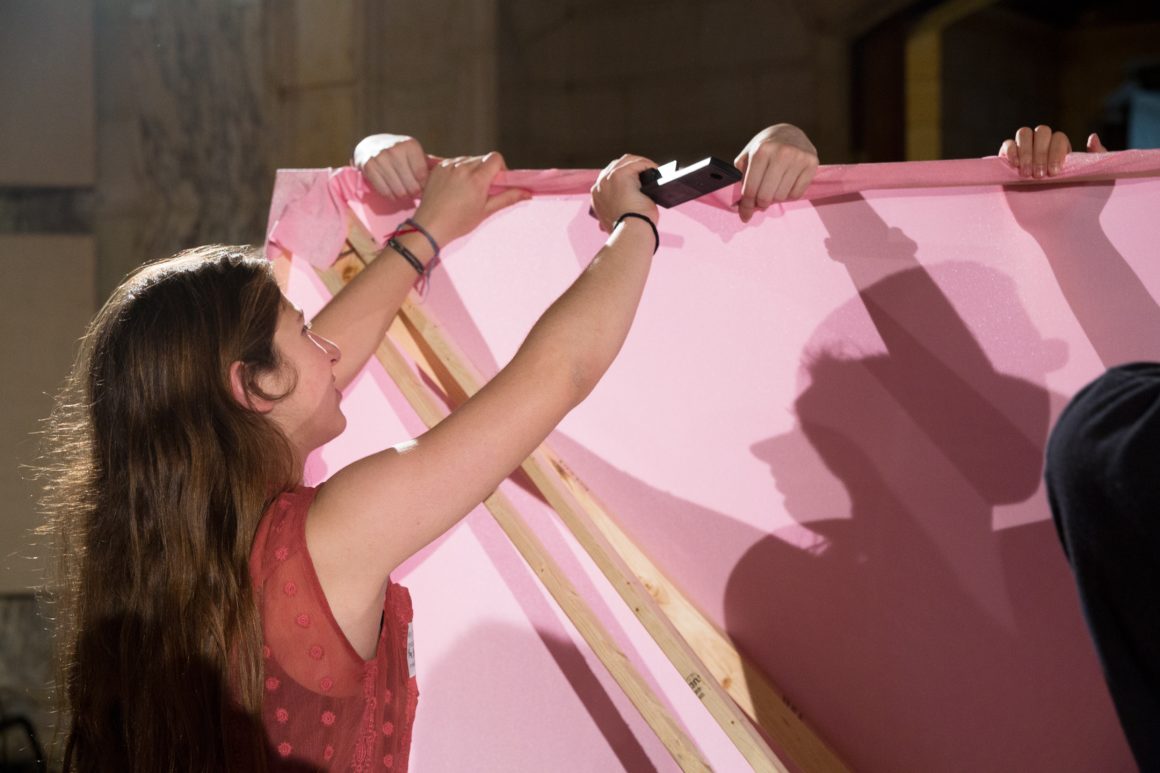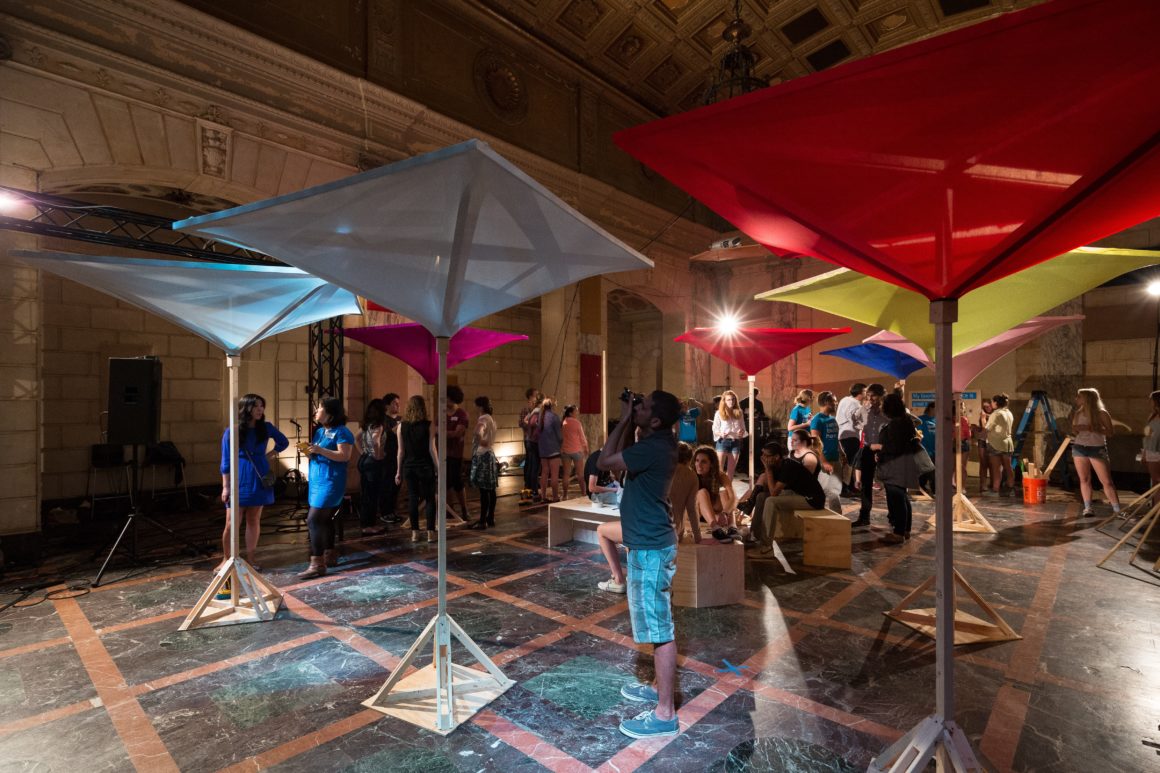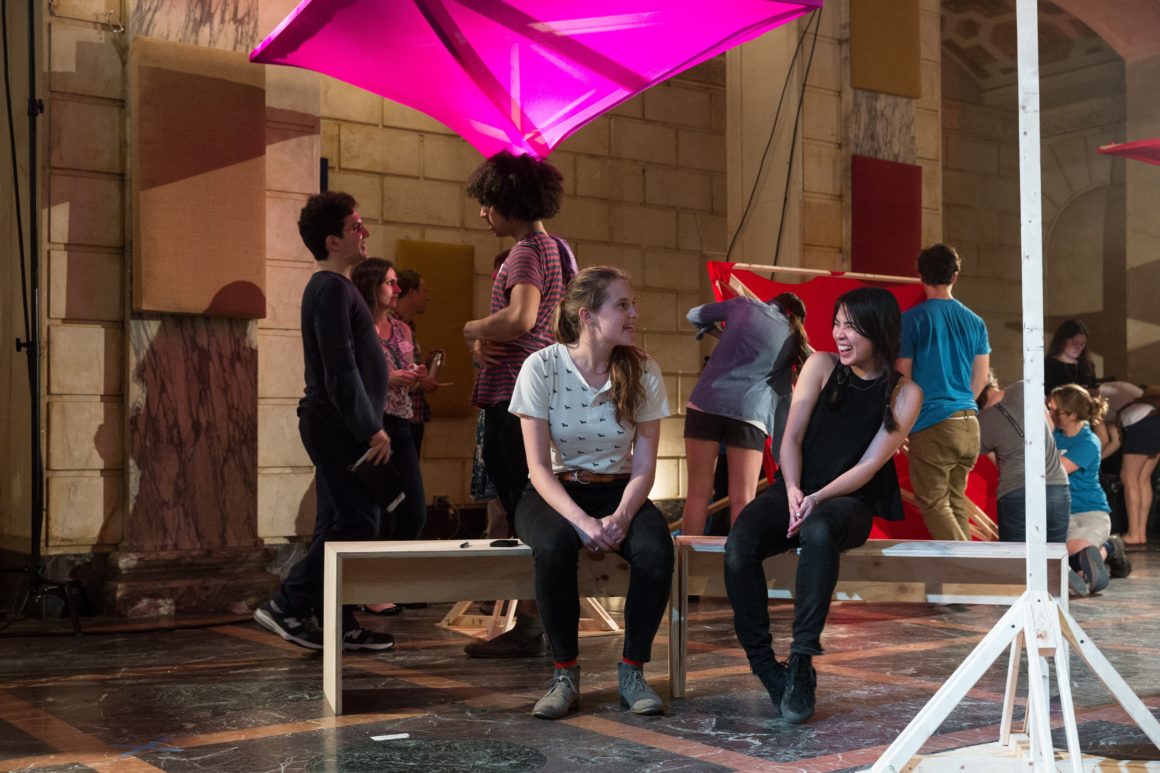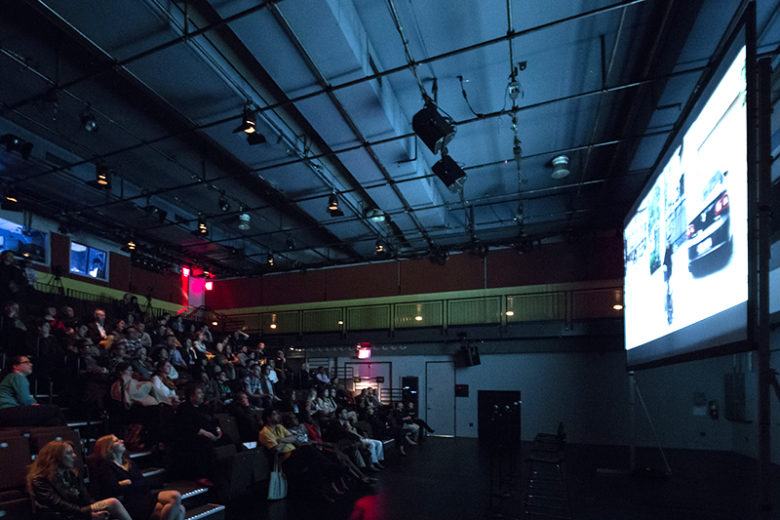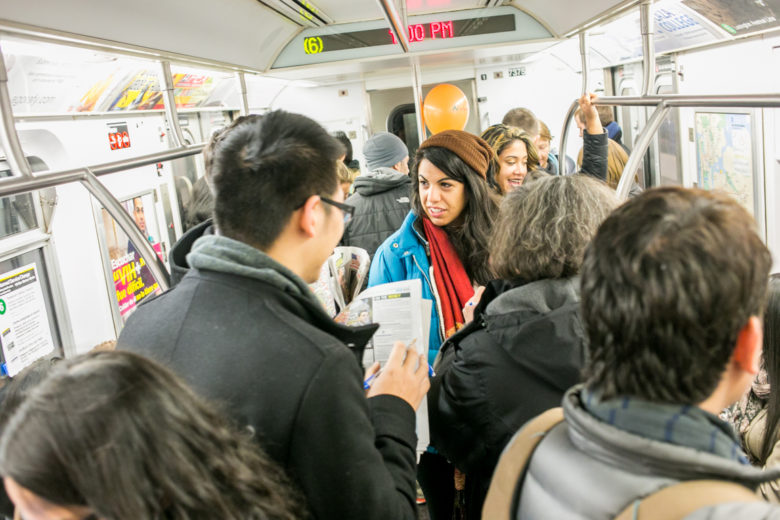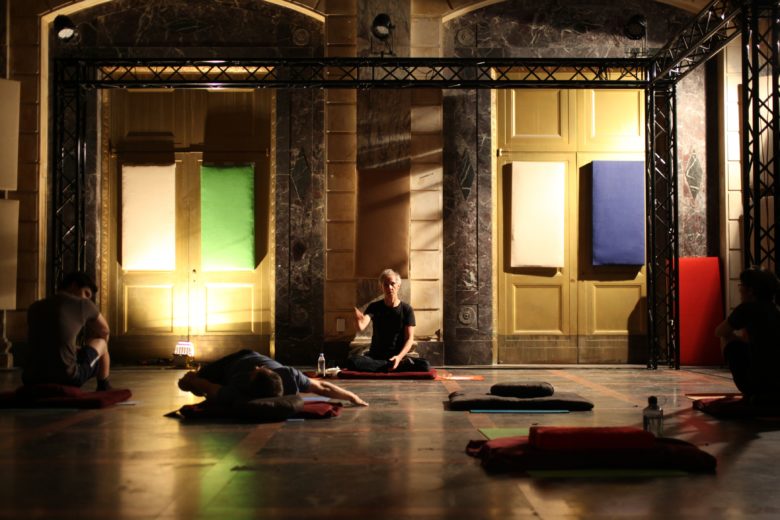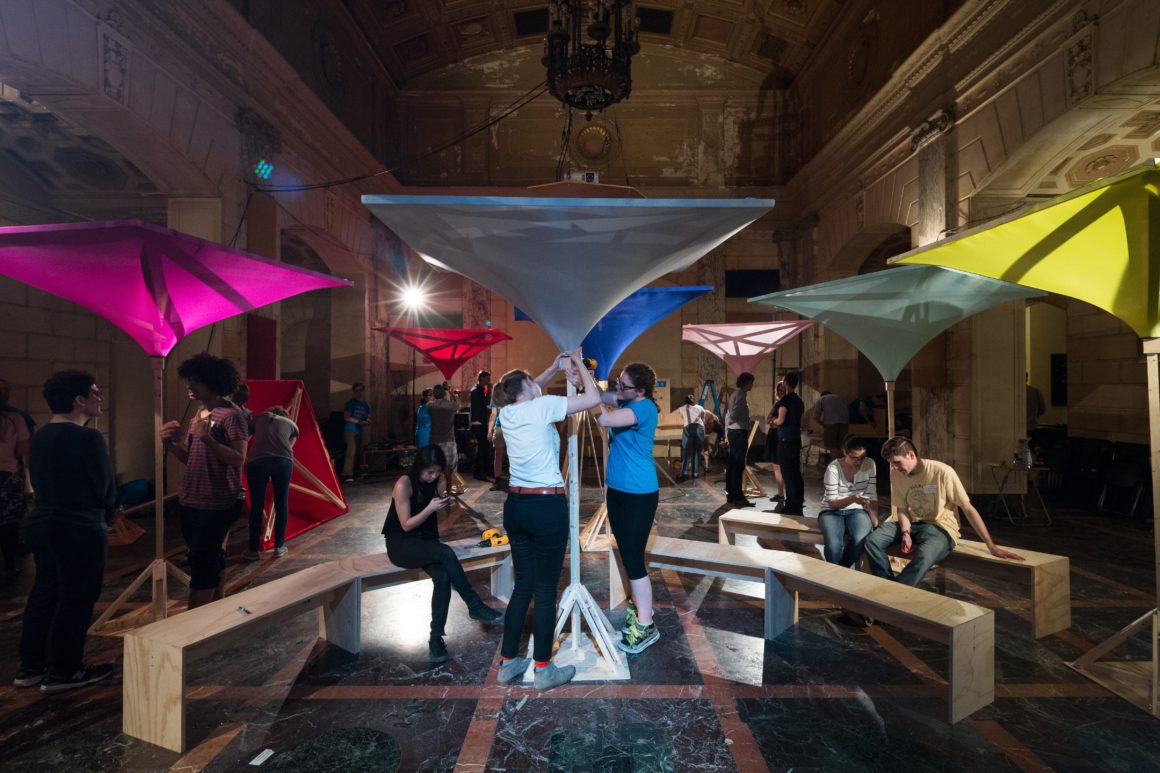

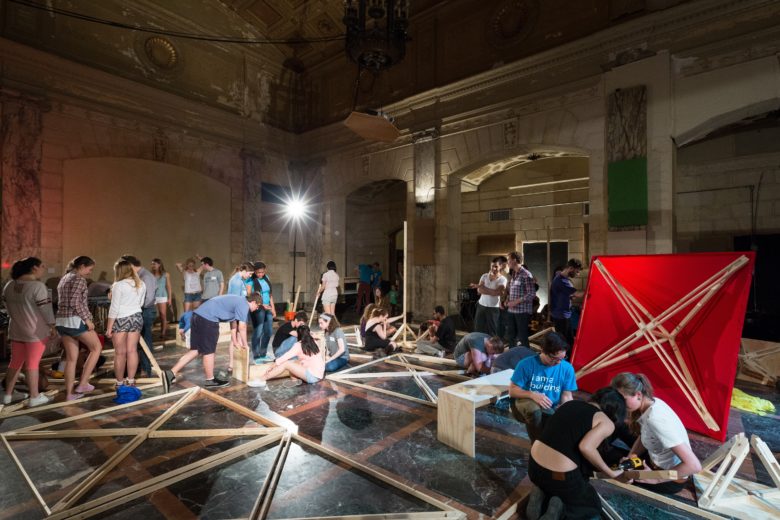
Instead, the nearby ISSUE Project Room rang with the sound of people working together to figure out how to make sturdy canopies and benches from of the materials they had in front of them. The largely teenaged group arrived with no particular building skills, but with some guidance they created a physical space for the lively conversation about public space that followed. It was the first in-depth exploration of the broader issues sketched out the night before in The Imprint of the City, the event that launched Van Alen Institute’s Spring 2014 Events continuing Elsewhere.
The afternoon’s efforts were typical of those developed by Public Workshop’s Alex Gilliam, who uses participatory design tools to empower teens and teach them that they can shape the public spaces around them. When the works happen outdoors, though, he said that it is the teenagers doing the teaching to passersby drawn in by all the activity: “When adults drive by and see what kids are building, they think to themselves, ‘I can do that.’ You’d be amazed at how well people learn when you don’t tell them what to do.”
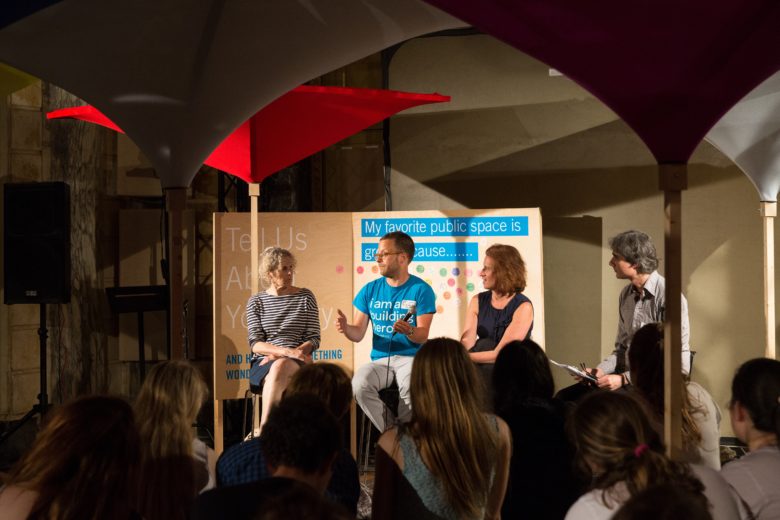
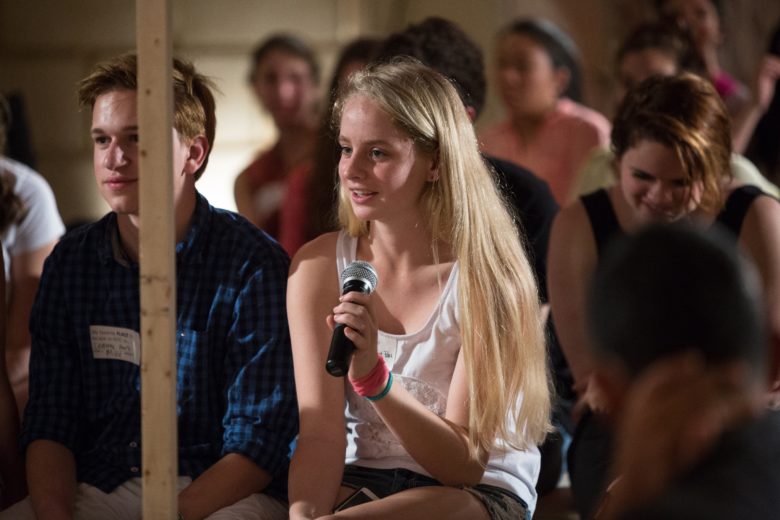
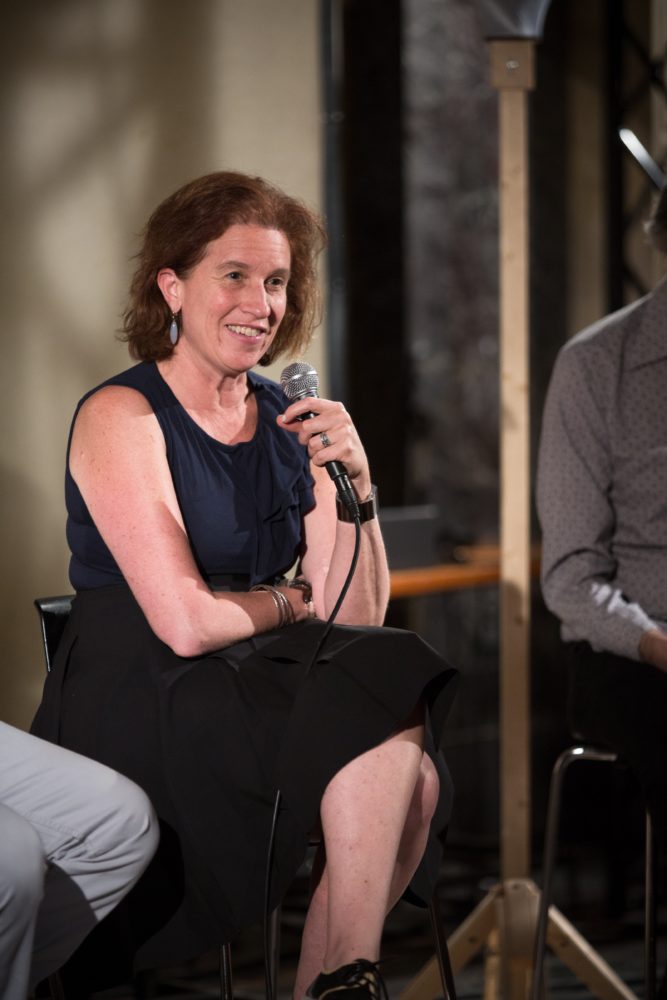
Gilliam was joined by Leslie Koch, President of the Trust for Governors Island; Wendy Feuer, Assistant Commissioner for Design, Art & Wayfinding at the New York City Department of Transportation; and moderator Daniel Campo of Morgan State University in Baltimore, all of whom grapple with the issue in their work.
Campo’s 2013 book, The Accidental Playground, documents the informal park that grew up along the abandoned terminals of the Williamsburg waterfront, and describes how the very activities that gave it life became illegal when the area became East River State Park in 2007. His study is not a nostalgic one, but asks what we can learn from the earlier version of the park, and how we can incorporate some of its grubby energy and sense of possibility into the parks and public spaces we build today.
When Campo raised this issue with the panelists, the first issue to come up was liability and the way it encompasses so many questions about public space. Pointing to the canopies that participants had just built, Gilliam said, “I had eight hours-worth of construction drawings to prove that no one was going to die. But at some point, on some project, someone will get hurt. What is the acceptable level of risk? And how do we work with people like Wendy [in the public sector] who are trying to push the limits?”
Governors Island is part of the public system, but still has the feeling of a place apart from the hyperregulated “Land of No,” as Campo called it. Koch described ways that she and her team are trying to keep the issues of liability from overdetermining everything they do, from creating enclosures where people can buy the alcoholic drinks that often fund free programs to building a treehouse for adults that was so sturdy it survived Superstorm Sandy.
The discussion ranged well beyond matters best settled by lawyers, however, and the audience raised questions about better methods of engaging with the public & getting citizen feedback, examples from other countries, and about the role of design in these interventions. Gilliam turned to the many teens in the audience, asked them what they had learned from their morning’s work. While one laughed that she was amazed that the bench her team built hadn’t collapsed, and another marveled at what you can do with limited time and materials, a third teen made a point could stand as the takeaway for the whole afternoon, for both young participants and panelists: “I realized that we had created a public space by working together.”
